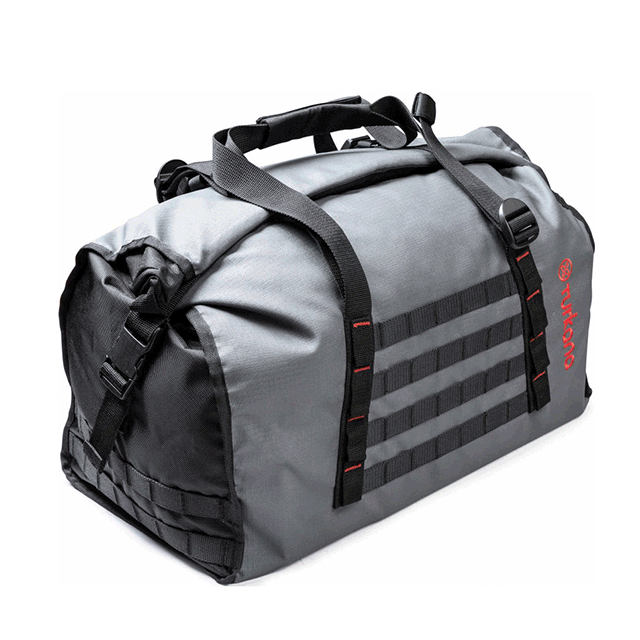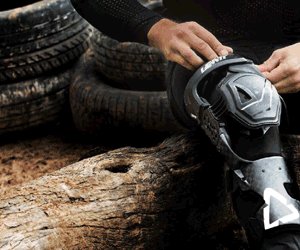“At the Rally Pan Am Rally School in February, I honestly thought I was in over my head, with no business even looking at a road book. These thoughts kept running through my mind as I tried to interpret the third tulip on my chart within the fourth kilometer of an eighty-kilometer stage. Coming to a complete stop off-course in the Nevada desert gave me a few minutes to run back the mental checklist that had just been preached to the group; ‘you will get lost, stop, go back to where you were not lost!’ said Scott Bright of Rally Pan Am. In no time I was back on course realizing I overshot the route by a mere ten meters and had a CAP heading fifteen degrees off. After this enlightenment, I was off, and things started to click.” – Mike Haberoth

Some might know Mike Haberoth from our previous article about his annual Ride North through the frozen wilderness of Alberta Canada. Luckily since the ice is only fit to ride for a couple of months each year, Mike also gets to do some warm weather riding the rest of the time. “The desire to learn Rally riding sank in this past August when I had the opportunity to try out for the Moto Medics team at the Baja Rally shakedown ride. Seeing the mental challenge of the unknown and how riders face it head on made me appreciate that it’s truly all in the competitor’s hands to either complete the stage or not. That really appealed to me.”

The most challenging part so far for Mike has been the unknown of what Rally is genuinely all about. “It is still kind of an underground type of racing with no real recipe to follow. So for me to jump into it with both feet and overcome the challenges has been extremely rewarding.” For most riders, the initial challenge is to develop a system of marking their road book, so they can easily read it at a glance. “Trusting in my interpretation of the tulips, hazards, and notes is key. This sunk in hard as the waypoints just clicked by one after another for about 14 mi / 22.5 km on a short stage during training. I was feeling good, the bike was dialed in, and riding was at a quick but comfortably safe pace. With my next turn coming up I was searching for a right turn with a note that said ‘dump.’ Here is this Canadian wound out in sixth gear looking for a physical garbage dump, not thinking what ‘dump’ actually meant. Well, forty-five minutes later on the wrong side of a mountain with a lot of bushwhacking through cactus, sage, and rocks behind me I headed back to find the ‘dump.’ This turned out to be a small pile of broken glass with a bucket and pallet. Rally lesson number two of the day; interpretation of the road book is crucial.”

“The biggest difference with learning to use the roadbook is that nothing happens unless you make it happen. There is no magic GPS arrow to follow or icon to keep between the dotted line. Without rider input to toggle the roll chart and to press the button that keeps the ODO where it needs to be there is no telling where you will end up. Don’t get me wrong, I love using my Garmin Montana 650 in certain applications but once a route is loaded and the navigation begins you’re really on cruise control. Just keep that arrow in front of you. The same principle can theoretically be applied with the roadbook, but it is all on the rider to keep ODO and CAP heading balanced to hit those waypoints dead on.”

Mike rides a 2017 Husqvarna FE 501. “In the spring of 2018, I swapped out my 2017 Husqvarna TE300 for the 501 with the intended purpose to get into Rallying. The build was a quicker process than expected since the 2017/2018 Husqvarna two strokes, and four strokes share a lot of the same parts allowing the upgrades to transfer to the 501. Deciding on the FE501 was also an obvious choice as the engine is almost flawless on reliability and produces a lot of power. The 2017 edition has a redesigned chassis and engine saving a lot of weight making the feel of the big thumper a lot more agile. Many people run the KTM 500 exc, but I wanted to have rear linkage suspension. So that meant the Husqvarna was the top choice. The relationship I’ve also built with the local Husqvarna dealership played a huge role; it’s almost second to none. Although when I say local you got to remember that Blackfoot Direct Husqvarna is 720km south of my home. That should be enough of an explanation as to why so many riders and top racers get set up there. Especially now with the addition of the shop opening up Direct Suspension, the WP Suspension Service Center for western Canada.”

The 501 has seen a significant set of Rally worthy upgrades. A major part of being fast in a navigation environment is the ability to read the directions at a glance while working one’s way through the terrain as efficiently as possible. Thus the cockpit was upgraded with Fasst Flexx Enduro handlebars with a 12degree bend and threaded inserts. Below this rides a BRP submount with a Scotts Steering Stabilizer. The rest of the front end rally conversion is by Motominded in the form of their Rally Moto Kit with the lighting supplied by Baja Designs in the form of the XL80 and S2 sport lights. The F2R 750 roadbook is held in place by a Rally Moto Shop holder while a Rallye Max G wheel sensor trip meter tallies the distances between markers. For bushwhacking terrain, a set of Cycra CRM hand-guards got installed. Belly protection is by TM Designs with Bulletproof Designs providing the radiator guard, front disc and rear disc guards. Michael also deleted the emissions and installed an FMF 4.1 slip-on with a spark arrestor to replace the original end can.

The suspension was upgraded with Dal Soggio valving while the final drive is now a 15/48 ration by SuperSprox running an RK X Ring Gold Chain. Mike swapped out the original wheels for a HAAN wheelset with Excel Rims that are shod with Goldentyre’s GT333 on the rear and the GT216 Fatty on the front. “They just flat out work and are predictable. Yes, they are towards the higher end of the price range, but they outlast the competition in my experience. Then again tires will always be debated almost as much as bikes or beer preferences.” For rider control and comfort, Mike fitted Steg Pegz along with a set of Fastway Evolution Adventure footpegs. An IMS 4.5 gal / 17 l fuel tank along with an Acerbis plastic kit with frame guards sits under some impressive graphics from M7 Designs. Naturally, the seat is a Comfort Tall with Gripper 2.0 and map pocket design by Seat Concepts. Last but not least, a set of Giant Loop grab handles, and Giant Loop Mojavi Saddlebags makes carrying the necessary survival gear a cinch.

“That is one department I always struggle with since it is hard to lose the medic/sweep rider thinking which can lead to full packs and hip belt. I’m constantly wondering how to carry my medical and survival gear most efficiently. With trial and error, I have been able to cut down unnecessary equipment and supplies. I do rely on the Ride Wild Medical kit with the addition of a few elastic bandages. It was advised to me from friend Rob Evans-Davies also know as Moto Medic Rob to carry a small collapsible umbrella, which to my surprise has come in handy on several occasions to keep the heat off during break downs or injuries. I use a Kreiga R8 tool pack for bike parts and tools and the Kreiga R20 for hydration and survival gear during long days. It downgrades to a Kreiga R3 for single track riding and when I’m close to civilization. There’s also always another pair of gloves and goggles in any of my packs which often gets handed off to others in the group. It might seem like overkill, but I also carry a SPOT Gen3 along with a Garmin inReach Mini. I like having a backup and being able to send messages is very handy. The SPOT also seems to be the standard for racing in groups. But time will tell which one I’ll really trust more.”

The learning curve has been steep for Mike, but as with all things worth it, he’s been working hard on all fronts to up his skill set to get to competition level. “Since Rally is not even on most peoples radar in Canada I have been reading as much information as possible. Then reaching out to riders, racers and event organizers for advice. Knowing my limitations as a rider, my mechanical abilities, conditioning, and critical thinking makes it possible for me to spot the weaknesses I need to improve on. That being said, Rally riding is proliferating in North America. There are currently five Rally events in Baja along with several other local races throughout the US and Canada giving racers the option to use roadbook navigation and expand on their skill base. Personally I’m most probably going to compete on a privateer level, but hopefully, I can convince some good friends and family to come along for the ride to help chase. A good team can take a lot of pressure off the individual during an event. With that in mind, the first race I would like to tackle in 2020 would be either the Sonora Rally or NORRA 1000 next spring.”
For more on Mikes road to being a rally privateer follow his journey on Instagram.
Images by Don Karle and Miguel Santana. Copyright individual owners.





Leave a Reply